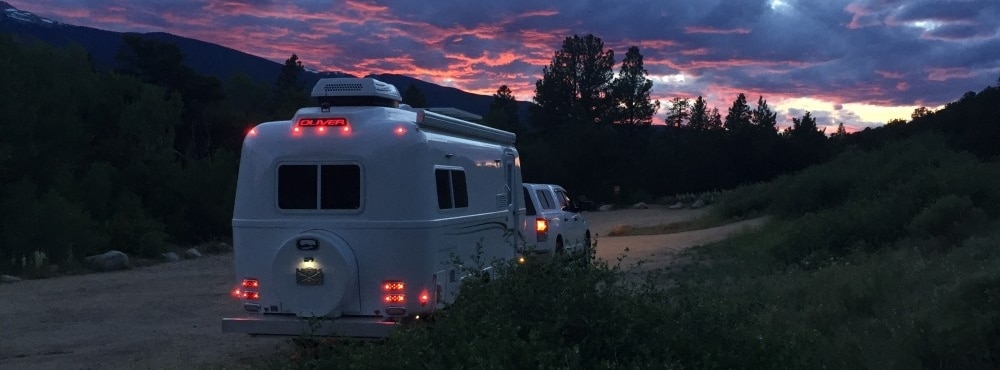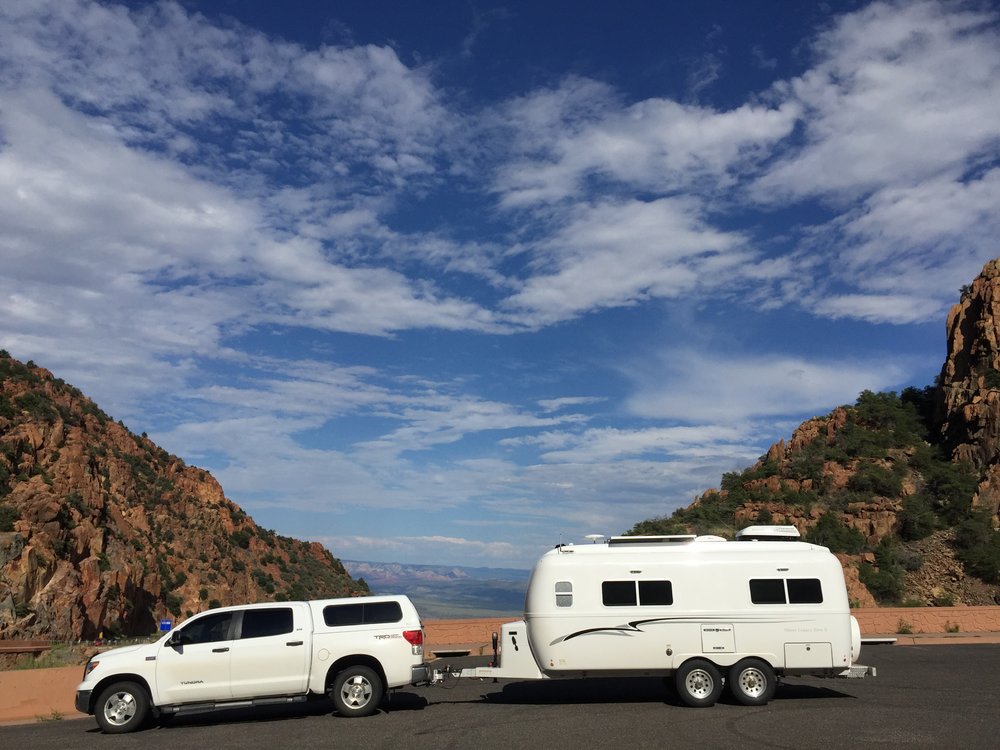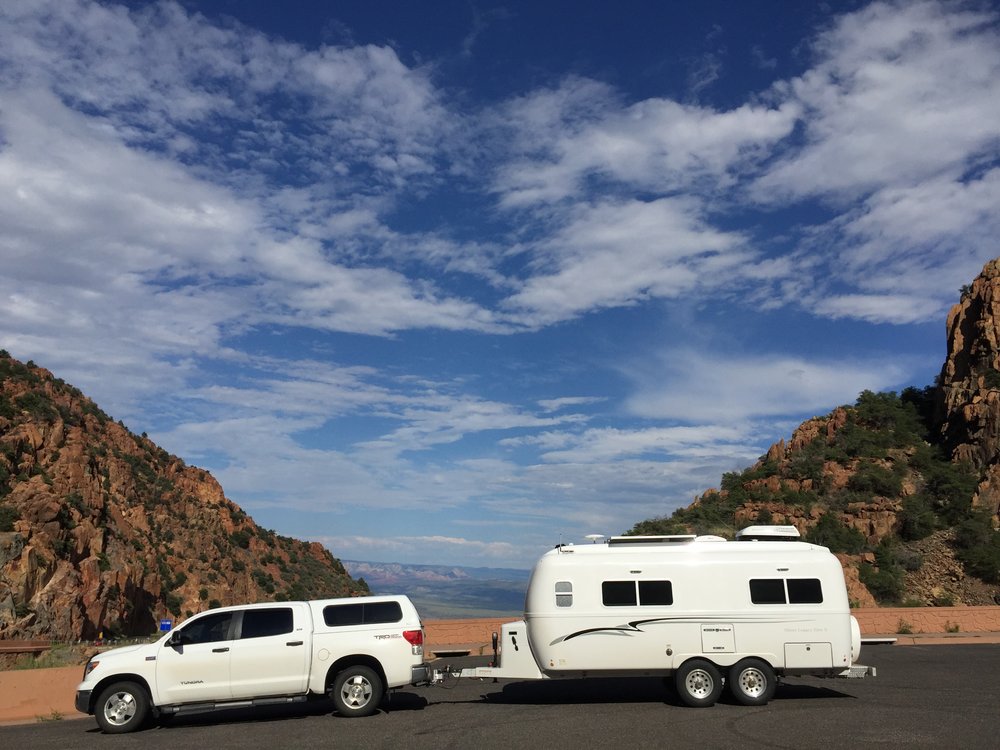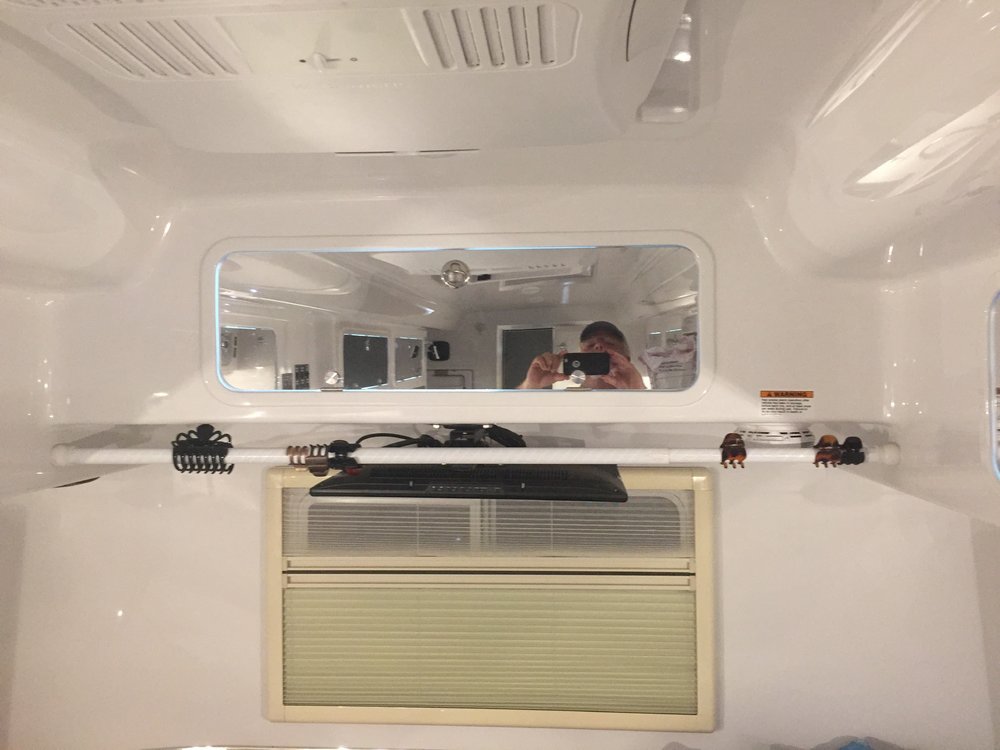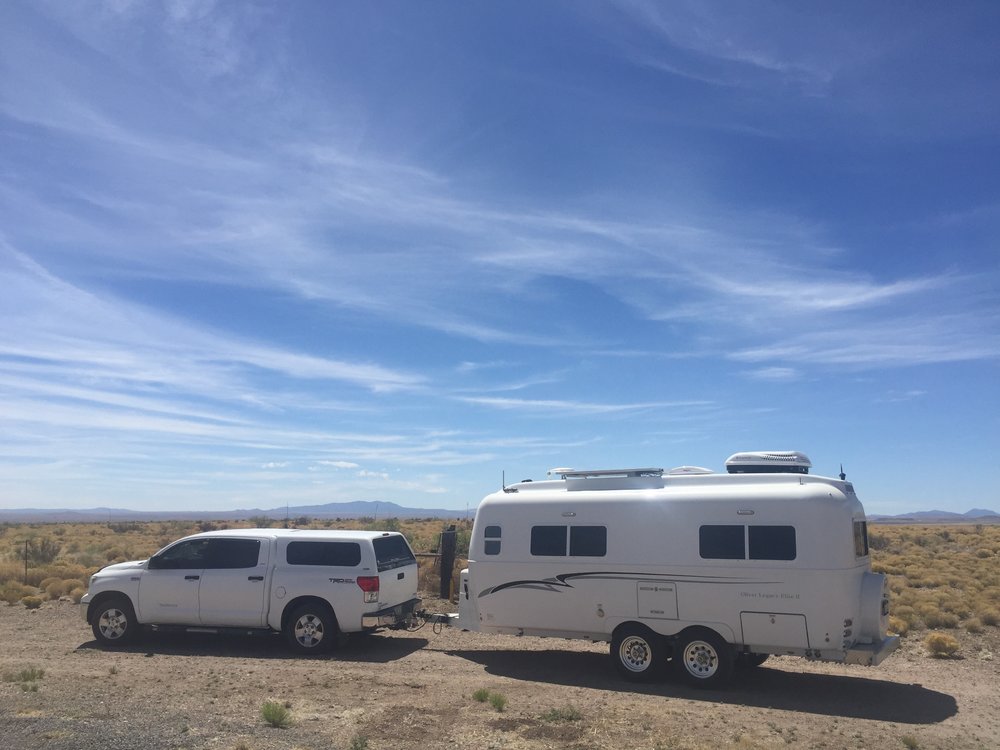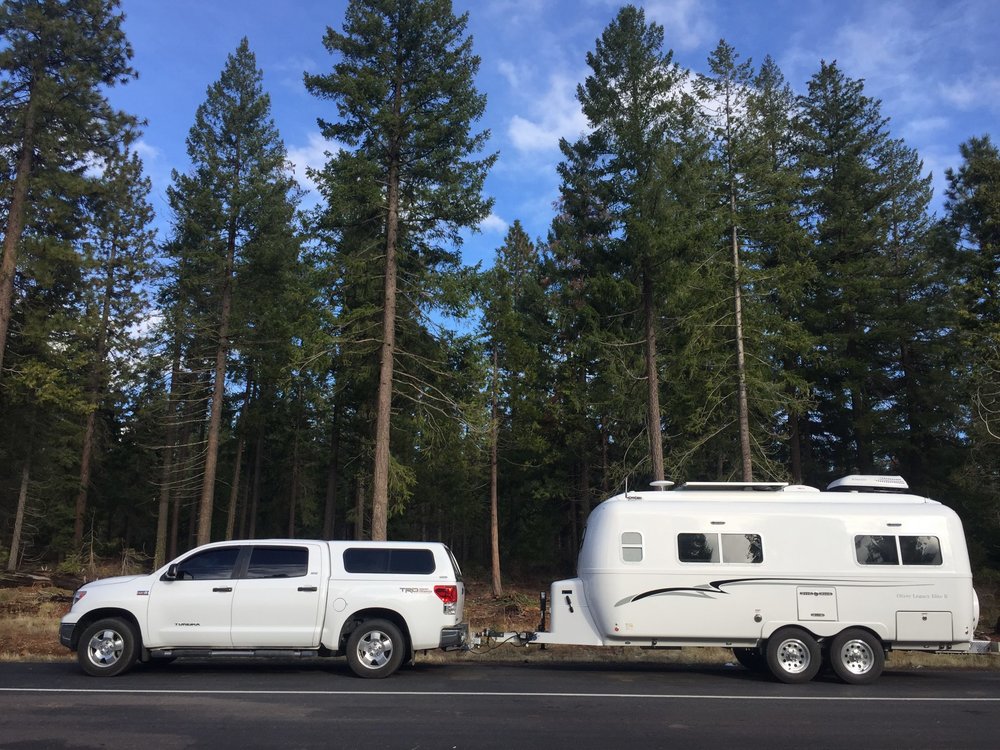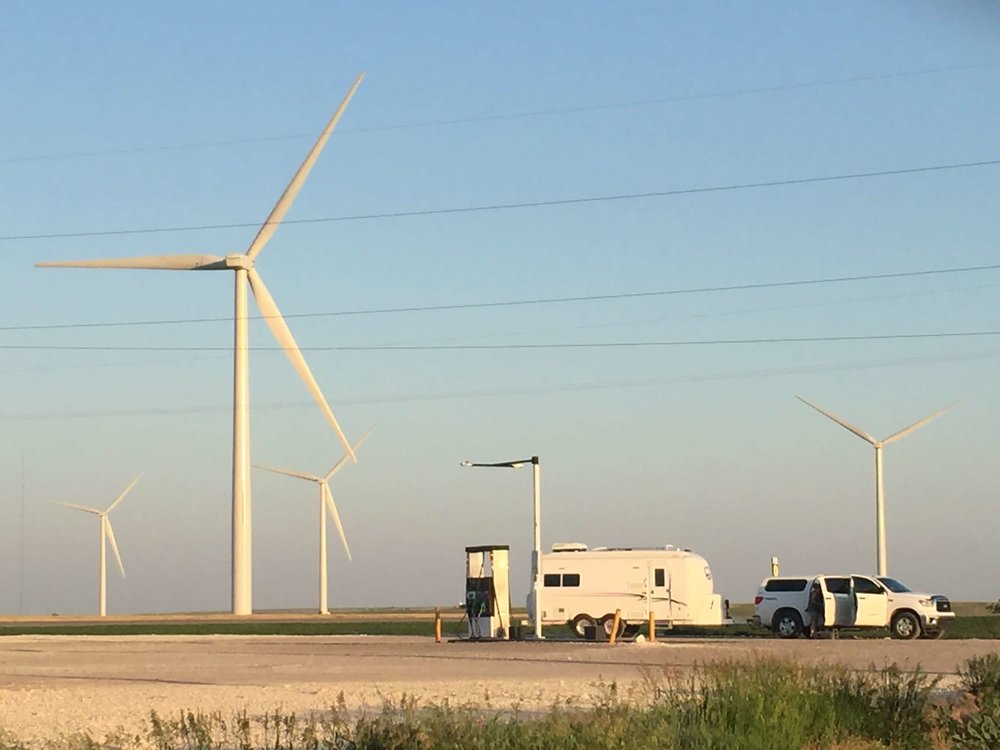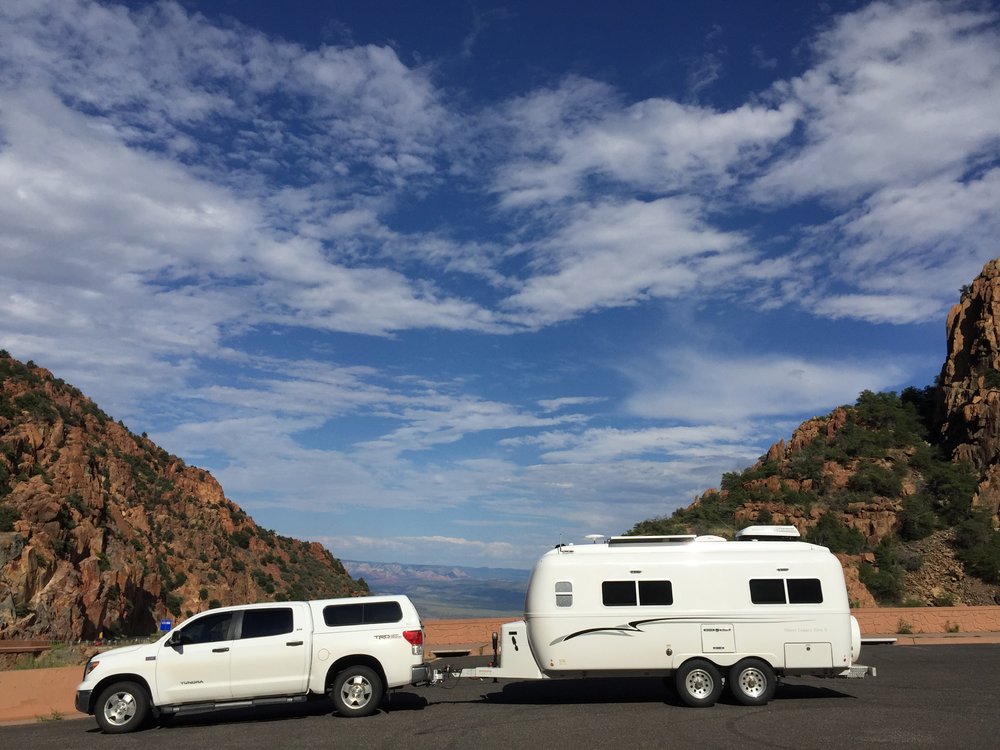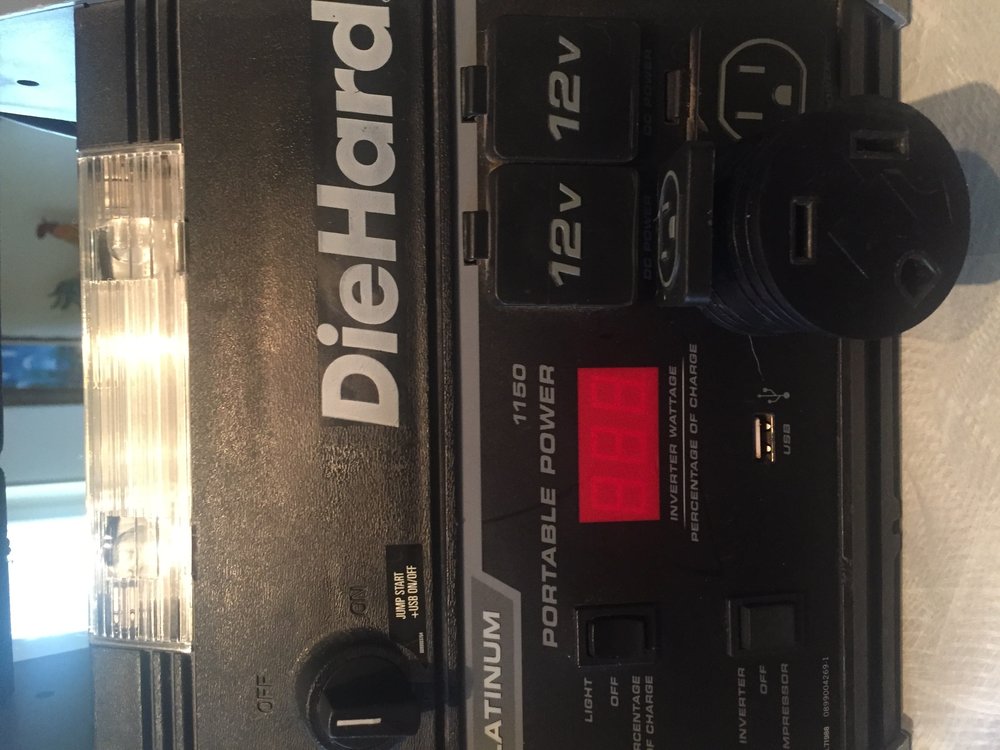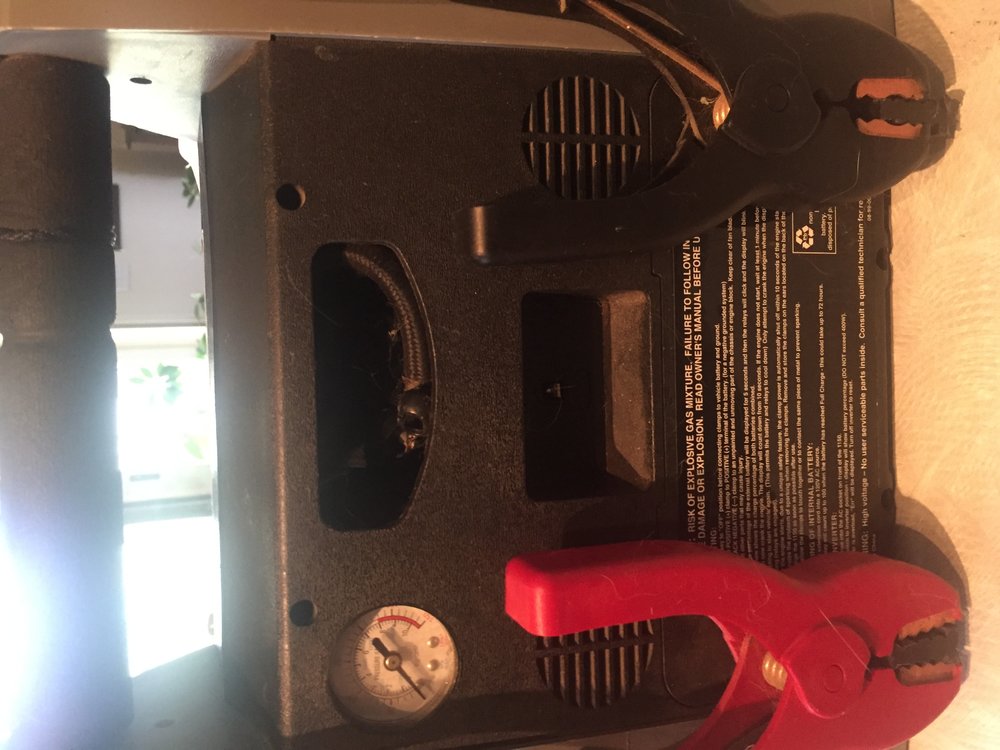-
Posts
294 -
Joined
-
Last visited
-
Days Won
11
Everything posted by Spike
-

Video - how to reverse a double trailer.... woohoo!
Spike replied to John E Davies's topic in Towing an Oliver
Is it just me, David, or are there obvious contradictions between the diagram and the video--other than the shift from terminology: "Scoop" to "Swoop"? The video shows the tow vehicle "scooping" toward and away from the parking space, while the diagram shows the vehicle driving past the space perpendicular to it. Also, the video shows no "critical" turn forward to the left. On the website, it states that "This last bit of information below will make things a lot easier too....." Well, perhaps, but certainly not clearer--to me at least. -

Toyota Tacoma and Elite II ??? Anyone tow with this combination?
Spike replied to doc foster's topic in Towing an Oliver
We own a Tacoma and a Tundra. Love them both. I would not consider pulling our Elite II with the Tacoma. The Tundra is perfect. We traded in our 4Runner (we are devoted Toyota customers)--which has the same chassis as the Tacoma--for the Tundra when we knew we were getting the Ollie. At first, we thought that we wanted the Sequoia, but then realized that for much less money we could get what we needed--something to haul the Ollie, us two humans, our Pyrenees mix, and cargo--with a Tundra and camper shell. We told our local Toyota dealer that we wanted a used Tundra 5.7 4x4 in any color, as long as it was white. We are extremely happy with what we got. In our opinion, the Tundra is the perfect tow vehicle for the Ollie. We weighed our Oliver II mostly "fully loaded" at about 5600 lbs, right within Dave Phelps' 5000-to-6000 lbs range. -

Thinking about 30A Shore Power at Home? READ THIS FIRST!
Spike replied to aquestell's topic in Mechanical & Technical Tips
I repeat the question because I'm not sure how many who could answer it read it. Since I am relatively new to RVing, I am interested in how more experienced RVers have dealt with this issue. (I promise not to bug the forum again with these questions if I still get no replies.) -

Thinking about 30A Shore Power at Home? READ THIS FIRST!
Spike replied to aquestell's topic in Mechanical & Technical Tips
Thanks, David, for this tip. I already have and use the circuit tester. Now I have ordered the other items to assemble the combined circuit-voltage tester. I DO have a question for David and others who have discovered problems with improper circuits and/or voltage in different campgrounds: What was your next step? Did you leave the campground? Get the campground manager to make adjustments? I'd like to know the stories and, most important, any suggestions for dealing with the issues. Thanks. -
Great! That is exactly the combination that we are considering. Thanks for the extra information about ordering. Looking forward to reading about your installation experience and level of satisfaction with the end result.
-

Fresh Water Tank Overflow Problem
Spike replied to roguebooks's topic in Mechanical & Technical Tips
If and when you do, please let us all know. That vibration cannot be good for anything. -
That feature seems to be a significant advantage of the Zarcor product. We would like to improve our door-window situation in two ways: 1) be able to block unwanted light and 2) be able to check on what is outside, particularly when someone comes a-knocking.
-

Fresh Water Tank Overflow Problem
Spike replied to roguebooks's topic in Mechanical & Technical Tips
Raspy-- I posted my fix for this problem somewhere on the forum, but it is easy to explain again: I pulled the frames off, unscrewed the clips that holds them to the walls, used two pair of channel locks (one small and one larger) to slightly bend each end of the clips out to widen them, and replaced the clips. I haven't had the frames come lose since that fix. Oh, and by the way, I turned the frames upside down so that the "privacy" (opaque) screen is at the bottom, and really like how that turned out. Do be careful if using a powered screwdriver: The clips can spin and could cut a finger. (I held the clips with the small channel lock when unscrewing and screwing.) -

Fresh Water Tank Overflow Problem
Spike replied to roguebooks's topic in Mechanical & Technical Tips
As I remember, it was named "legacy" to honor one of the deceased Oliver brothers who helped with the design of the original trailer. -
I have flushed the grey tank (having an empty black tank due to the composting toilet) once since using TankTechRX. I figured that it would not be hard to re-establish the needed "culture" by re-introducing the product via the three drains after flushing. One thing that I DID check when draining the grey tank was the odor. (I don't use the big "stinky slinky" hose but have used the VALTERRA T1020-1 RV SEWER HOSE TERMINATION CAP WITH GARDEN HOSE CONNECTION to attach a grey garden hose to drain the grey tank.) After using the TankTechsRx for a number of days before draining, there was a noticeable reduction in the odor.
-
I appreciate your thinking on this, David. I thought a little more about your thoughts: Perhaps because the bottles still retained air to about 1/4 of their capacity, and because I shook the bottles and and only capped them for about 24 hours, the aerobic bacteria was not deprived of enough oxygen to impede their growth. Perhaps some aerobic-anaerobic expert on the forum could weigh in on this question. As for me, I'll pass on more dog-poop experiments. Combining this experiment's outcome with my own subject observations on TankTechsRX's efficiency on the grey tank and composting toilet, I will revert to dealing with my dog's yard poop in a less intimate fashion.
-
In place of the bicycle rack, it seems you could modify your Ollie bumper to be able to carry this: <p style="text-align: center;">https://www.motor1.com/news/261239/hitch-hotel-expandable-wheel-less-trailer/</p>
-

HOW TO: Wire cable clothes line - full cabin length
Spike replied to John E Davies's topic in Ollie Modifications
I agree with David that your "your engineering on this is amazing!" I haven't the skills, knowledge, or tools to implement your full-cabin-length solution, which, I agree, should now be built into all new Olivers. This is our cabin-width solution, with no engineering necessary--just a shower curtain tension rod and hair clips--but it works great for hanging our hats and other to-be-used-soon clothing. -
This is what I found by searching my past Amazon orders: <p style="text-align: center;">https://www.amazon.com/gp/product/B01CD4BK4U/ref=oh_aui_search_detailpage?ie=UTF8&psc=1</p> It seems to be the smaller bottle: "32 treatments." You don't have to use much. The instructions advise you, once you have completed the first treatment--to never completely empty your holding tanks--to allow the "culture" to remain and do its work. By the way, there is a video out there in cyberspace with a guy experimenting with it--with reportedly good results--in a septic system.
-

Carr Fire in California caused by flat trailer tire sparks
Spike replied to John E Davies's topic in Towing an Oliver
Just think of how that person towing that trailer will feel about that incident for the rest of his or her life . . .- 1 reply
-
- 1
-

-

Has anyone experienced birds nesting in their air conditioner?
Spike replied to Yukon's topic in Mechanical & Technical Tips
Thanks for that suggestion. I found a nest, cleaned it out, and put the cover back on. The next day, the nest was back. I felt sorry for the birds' wasted work but took the new nest out and left the cover off for a couple of days to discourage further attempts. I need to get back up there before next spring to implement mountainoliver's solution. -
We are glad that we decided upon the Nature’s Head Composting toilet when ordering our Ollie. While our composting seems to have been going well (there ARE things to learn from experience and from paying attention to instructions on doing it well), I thought that it wouldn’t hurt to help with the process. I ordered the Sun-Mar product, which is advertised as an additive to speed up the composting process. I didn’t notice much of any improvement after using Sun-Mar for a month or so. However, our local RV repair shop recommended the TankTechsRx product for our grey water tank, and it worked MUCH better than the product we had been using to control odor coming from the sink and shower drains: Camco TST Lemon Scent RV Grey Water Odor Control. So, I decided to mix some of the TankTechsRX with water in a spray bottle and spray some periodically into the composting toilet. (One of the important things to learn about composting toilets is to keep the mixture at a certain moisture level—not too wet, not too dry. Adding coffee grounds, which helps with odor control, as well, is something we do frequently here in the dry Southwest.) TankTechsRX DID seem to speed along the composting process and help illuminate any occasional odor we experienced. I decided, however, to see if--by using a more objective measurement—this product actually did do what it seemed to be doing better than Sun-Mar (both TankTechsRX and Sun-Mar are advertised as containing a blend of microbes) and better than nothing by performing this experiment: 1. I placed a small amount (about 2 tablespoons) of my dog’s poop, gathered from the backyard, into three 8 oz bottles: a) one with water and about a teaspoon of Sun-Mar; b) one with water and about a teaspoon of TankTechsRX; c) one with nothing but water. I capped and shook the bottles briefly and set them outside. 2. After about 24 hours, I opened the bottles. I made the big mistake of getting my nose too close to the opened bottle containing nothing but poop and water. (My wife could hear me gagging outside as she sat inside the house.) The bottle with water, poop, and Sun-Mar was a bit better but still had quite a disagreeable odor. However, the bottle of water with TankTechsRX just smelled like TankTechsRX--which does not impart an unpleasant odor at all. Also, the “solid matter” in the TankTechsRX appeared to be more dissolved than that in the bottle containing Sun-Mar. I can now, with confidence, recommend TankTechsRX as an extremely useful addition to black and gray water tanks, but also as an addition to composting toilets. What we do is to make a solution of about 5 parts water to 1 part TankTechsRX in a small spray bottle that is kept in the bathroom cabinet and spray a bit of the mixture into the solid-waste part of the toilet each time we use it, and of course, give the spider handle a few good turns as usual. You should just follow label directions when using TankTechsRx in black and grey water tanks. I hope that my gross experiment might be useful for folks who use—or are thinking of using—a composting toilet, and for all folks with grey and black water tanks.
-
Same here with our 2016 Tundra and Elite II.
-
I also received prompt and friendly service, and good advice, when I asked for extra clips that secure the blinds to the window frame. Great company.
-
All I can say about this is that we have towed thousands of miles now with our 2013 5.7 4X4 Tundra without the Andersen, and without swearing (at least about the truck, trailer, or hitch). I did install the Hayes Sway Master, not because we had any issue with sway but as an additional safety measure. (It engaged once when I had to swerve to avoid hitting a teenager swerving into my lane while texting, and I was glad it did.) In addition to feeling stable, as far as sway is concerned, the Tundra always feels up to the task power-wise: I've been able to accelerate quickly when needed, pulled Ollie up some steep, unpaved hills using the 4x4 function, etc. When people ask how our Oliver tows, I say "Like a dream." Compared to other RV rigs out there, I feel like we are the luxury sports-car rig on the road. I haven't towed with anything else, so I can't compare towing experiences, but I certainly don't feel that the Tundra's capabilities are "marginal."
-
Not sure to whom this question is addressed, but after posting above, I did some more online research to discover that my current (accidental pun) portable inverter puts out only 400 watts. Like I said, I have little knowledge of electrical components. That is why I asked for input from those with more knowledge and experience. I did find this article about installing an inverter that seems to accord with Raspy's idea: https://www.familyhandyman.com/automotive/how-to-turn-your-truck-into-a-generator/view-all If I were to go this route, I would hire a qualified expert to do the work. The author of this article mentions making 1,800 watts available. I don't know if that would be sufficient, but paying more for a higher-wattage inverter and paying for a qualified expert to do the work might still, in the end, be more cost-effective and pay off with the other benefits that Raspy mentions. What other things might folks who may be thinking of using their tow vehicle as a generator need to consider?
-
John, I am excited about this possibility--that is, using our idling Tundra to power our Ollie's AC when needed. I may be ready to experiment with this set-up but, since I have very little knowledge of electrical functions, I want to be careful that my ignorance does not cause damage to any of the electrical components of Ollie or Stan (our Tundra). As I understand your proposal, to implement it, I would take the following steps: Hook up the jumper cables attached to my portable inverter to my truck's battery. Plug in the adapter (AC power to 30 amp). Plug in the shore-power cord to Ollie and the adapter. Start the truck. Turn on the AC inside Ollie. Do I have it right? By looking at the photos of my inverter with the adapter (below), can you tell whether this set-up will suffice? Will I be risking any damage to any of the electrical components? If this works, I still face two more challenges: The jumper cables attached to my inverter are short, so I would need to find a way to extend their reach when facing an actual boondocking situation when we wanted AC. It would be good to be able to close the truck's hood and place the inverter on some safe, stable, and protected location. We would not feel very secure sleeping inside our trailer with the truck idling and the key in the ignition without being able to keep the truck locked. We just experimented with locking the truck with one of the keys in the ignition, thinking that we could then use the other key to open the locked truck door. We discovered that the truck would not lock with one key in the ignition. I once owned a Toyota vehicle in which it was possible to leave it idling and locked with the key out of the ignition. Perhaps, if the rest of this experiment goes well, I can talk to Toyota about modifying the ignition system to do just that. I'm also wondering how gasoline consumption would compare, that is, using the truck vs a gasoline-powered generator. I thank you--and any others--in advance for any feedback on this. P. S. John, I think that I once read your interesting story about Sandy. Can you, by any chance, re-direct me to it?
-
That I appreciate mucho.
-
Wow! That is a great idea. No need to carry the extra propane. My Tundra idles quietly for sure. Yes, Please let me know how it works for you. I have a portable inverter. Not sure now of the wattage output but will check it out. As I understand your proposal, it is to connect the inverter to the truck's battery via the attached jumper cables and then, while truck is idling, run the AC by plugging the shore power cable into the inverter. (The electric juice must flow either way?) Is that correct? I would need to use an adapter plug of some sort to connect the shore power cable into the inverter, wouldn't I? If it turns out that my inverter has the needed wattage output and an adapter of some sort will suffice, I will try this soon.

